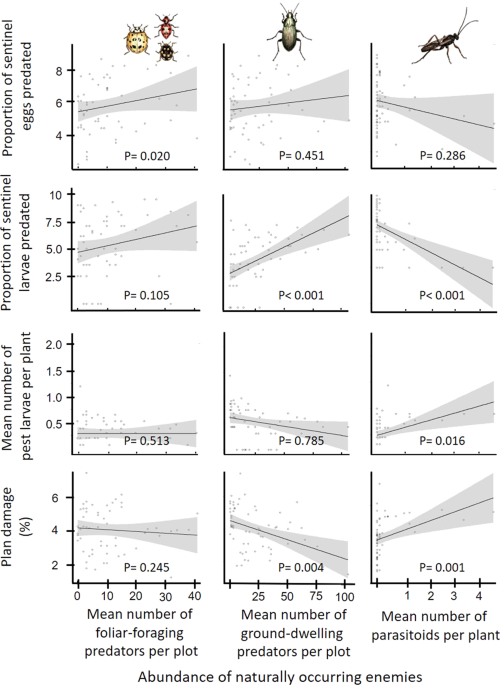The 8-Second Trick For Eco Bed Bug Exterminators Dc
Some Known Details About Eco Bed Bug Exterminators Dc
Table of Contents7 Easy Facts About Eco Bed Bug Exterminators Dc DescribedOur Eco Bed Bug Exterminators Dc IdeasThe Greatest Guide To Eco Bed Bug Exterminators Dc5 Simple Techniques For Eco Bed Bug Exterminators DcThe Eco Bed Bug Exterminators Dc PDFs
Due to the fact that chemicals are poisonous, they are likewise potentially hazardous to humans, pets, various other microorganisms, and the environment. Therefore, people that use chemicals or routinely been available in contact with them should understand the loved one poisoning, possible health and wellness impacts, and preventative measures to lower exposure to the items they utilize. Threat, or risk, of making use of pesticides is the possibility for injury, or the degree of danger associated with making use of a chemical under a given collection of conditions.
Applicators can decrease or virtually remove exposure-- and thus reduce hazard-- by adhering to the tag directions, making use of individual safety clothing and tools (PPE), and managing the chemical correctly. For instance, even more than 95 percent of all pesticide exposures originate from dermal direct exposure, largely to the hands and lower arms. By putting on a pair of unlined, chemical-resistant handwear covers, this kind of exposure can be virtually removed.
The damaging results that happen from a solitary exposure by any type of path of entry are termed "intense impacts." The 4 routes of direct exposure are facial (skin), inhalation (lungs), oral (mouth), and the eyes. Severe poisoning is figured out by taking a look at the facial toxicity, inhalation poisoning, and dental toxicity of guinea pig.
Fascination About Eco Bed Bug Exterminators Dc
Intense poisoning is gauged as the quantity or concentration of a toxicant-- the a.i.-- needed to eliminate half of the pets in an examination population. This procedure is generally expressed as the LD50 (lethal dosage 50) or the LC50 (deadly concentration 50). Furthermore, the LD50 and LC50 values are based upon a single dosage and are taped in milligrams of pesticide per kilogram of body weight (mg/kg) of the examination pet or in components per million (ppm).
The reduced the LD50 or LC50 worth of a chemical product, the greater its poisoning to people and pets. Chemicals with a high LD50 are the least poisonous to human beings if made use of according to the instructions on the item tag. The chronic poisoning of a pesticide is determined by subjecting test animals to long-term exposure to the energetic component.
The persistent poisoning of a pesticide is harder than severe poisoning to establish through lab evaluation. Products are categorized on the basis of their family member severe toxicity (their LD50 or LC50 worths). Pesticides that are classified as extremely harmful (Toxicity Group I) on the basis of either dental, dermal, or inhalation poisoning have to have the signal words risk and poisonous substance printed in red with a skull and crossbones icon prominently showed on the front panel of the bundle tag.
The intense (single dose) oral LD50 for pesticide products in this group varies from a trace amount to 50 mg/kg. As an example, exposure of a couple of decreases of a material taken orally can be deadly to a 150-pound person. Some chemical products have simply the signal word risk, which tells you absolutely nothing regarding the severe poisoning, just that the product can create extreme eye damage or serious skin inflammation
All about Eco Bed Bug Exterminators Dc
In this classification, the acute dental LD50 ranges from 50 to 500 mg/kg. A tsp to an ounce of this material could be deadly to a 150-pound individual (bed bug treatment). Chemical items identified as either slightly hazardous or fairly safe (Poisoning Classifications III and IV) are needed to have the signal word CAUTION on the chemical label

All pesticide toxicity valuesPoisoning worths the LD50, can be found on the product's Material Safety Data Safety and security InformationMSDS). Pesticide labels and MSDS can be obtained from retailers or great post to read produces - https://worldcosplay.net/member/1739615. The signs of pesticide poisoning can range from a moderate skin inflammation to coma or even fatality.
People likewise vary in their level of sensitivity to different levels of these chemicals. Some individuals may show no reaction to an exposure that may trigger extreme illness in others (how to get rid of bed bugs). As a result of possible health concerns, pesticide users and trainers must acknowledge the usual signs and symptoms of pesticide poisoning. The results, or symptoms, of pesticide poisoning can be generally defined as either topical or systemic.
Eco Bed Bug Exterminators Dc - The Facts
Dermatitis, or swelling of the skin, is approved as one of the most generally reported topical effect connected with chemical exposure. Signs of dermatitis range from reddening of the skin to rashes and/or sores. Some people often tend to cough, hiss, or sneeze when revealed to chemical sprays. Some individuals respond to the solid smell and bothersome results of oil distillates used as providers in chemical items.
This symptom generally subsides within a couple of mins after an individual is gotten rid of from the direct exposure to the toxic irritant. A reaction to a pesticide product that causes somebody not only to sneeze and cough but also to create extreme intense respiratory system symptoms is extra most likely to be a real hypersensitivity or allergic response.
Systemic effects are fairly various from topical effects. They typically occur far from the initial point of contact as an outcome of the pesticide being taken in into and dispersed throughout the body. Systemic results usually consist of nausea, vomiting, exhaustion, headache, and intestinal tract conditions. In sophisticated poisoning cases, the person may experience modifications in heart price, trouble breathing, convulsions, and coma, which can cause death.